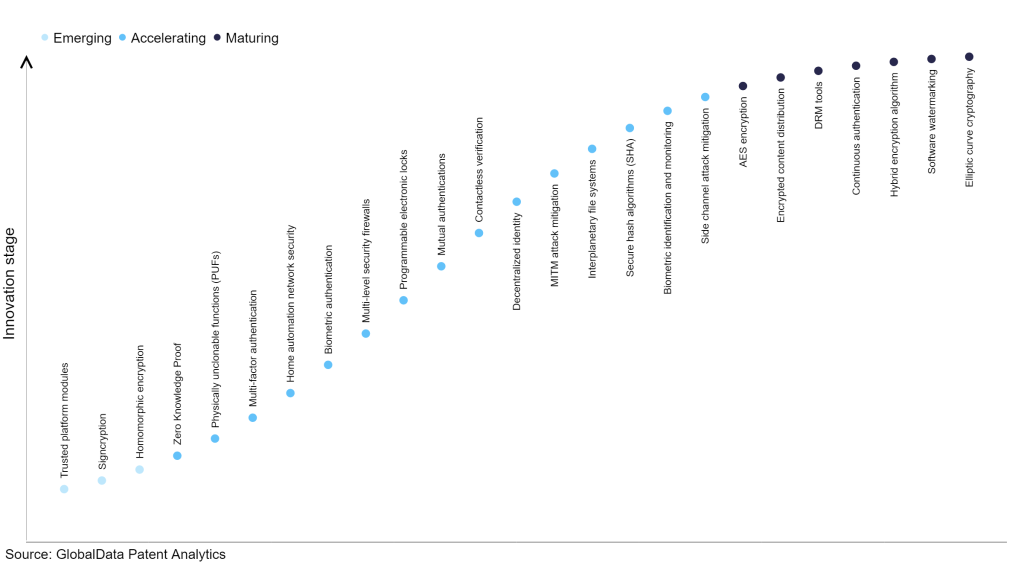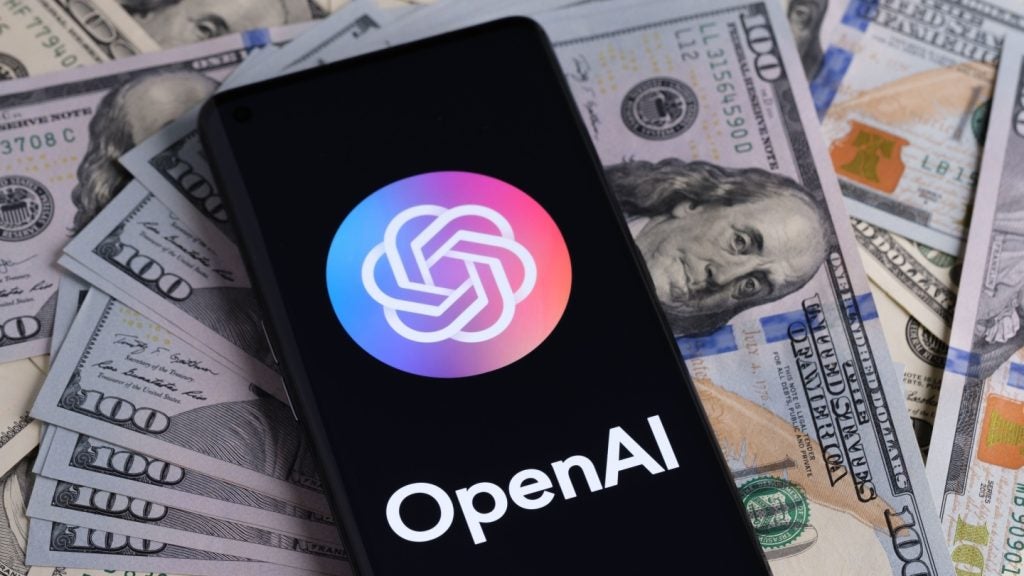The technology industry continues to be a hotbed of patent innovation. Activity is driven by the increasing threat landscape of cyberattacks targeting encrypted data, the growing demand for secure data processing, the need to protect sensitive information from unauthorised access, the rise in cloud computing and data outsourcing, the importance of preserving privacy, and growing importance of technologies such as lattice-based cryptography, secure multi-party computation (MPC), and zero-knowledge proofs. Homographic encryption uses fully homomorphic encryption, partially homomorphic encryption and somewhat homomorphic encryption to ensure secure computations on encrypted data while maintaining confidentiality and privacy. In the last three years alone, there have been over 4.1 million patents filed and granted in the technology industry, according to GlobalData’s report on Cybersecurity in technology: homomorphic encryption. Buy the report here.
However, not all innovations are equal and nor do they follow a constant upward trend. Instead, their evolution takes the form of an S-shaped curve that reflects their typical lifecycle from early emergence to accelerating adoption, before finally stabilizing and reaching maturity.
Identifying where a particular innovation is on this journey, especially those that are in the emerging and accelerating stages, is essential for understanding their current level of adoption and the likely future trajectory and impact they will have.
190+ innovations will shape the technology industry
According to GlobalData’s Technology Foresights, which plots the S-curve for the technology industry using innovation intensity models built on over 1.5 million patents, there are 190+ innovation areas that will shape the future of the industry.
Within the emerging innovation stage, trusted platform modules, signcryption, and homomorphic encryption, are disruptive technologies that are in the early stages of application and should be tracked closely. Zero knowledge proof, physically unclonable functions (PUFs), and multi-factor authentication are some of the accelerating innovation areas, where adoption has been steadily increasing. Among maturing innovation areas are AES encryption and encrypted content distribution, which are now well established in the industry.
Innovation S-curve for cybersecurity in the technology industry

Homomorphic encryption is a key innovation area in cybersecurity
Homomorphic encryption refers to an encryption technique that enables computations to be conducted on encrypted data directly, eliminating the requirement for prior decryption. Consequently, the data remains safeguarded and maintains its security even during the computation process.
GlobalData’s analysis also uncovers the companies at the forefront of each innovation area and assesses the potential reach and impact of their patenting activity across different applications and geographies. According to GlobalData, there are 190+ companies, spanning technology vendors, established technology companies, and up-and-coming start-ups engaged in the development and application of homomorphic encryption.
Key players in homomorphic encryption – a disruptive innovation in the technology industry
‘Application diversity’ measures the number of applications identified for each patent. It broadly splits companies into either ‘niche’ or ‘diversified’ innovators.
‘Geographic reach’ refers to the number of countries each patent is registered in. It reflects the breadth of geographic application intended, ranging from ‘global’ to ‘local’.
Patent volumes related to homomorphic encryption
| Company | Total patents (2010 - 2022) | Premium intelligence on the world's largest companies |
| Thales | 36 | Unlock Company Profile |
| Microsoft | 153 | Unlock Company Profile |
| Siemens | 35 | Unlock Company Profile |
| Alibaba Group | 320 | Unlock Company Profile |
| State Grid Corporation of China | 25 | Unlock Company Profile |
| Hitachi | 95 | Unlock Company Profile |
| SAP | 93 | Unlock Company Profile |
| Via Science | 29 | Unlock Company Profile |
| Koninklijke Philips | 124 | Unlock Company Profile |
| Mitsubishi Electric | 184 | Unlock Company Profile |
| The Toronto-Dominion Bank | 25 | Unlock Company Profile |
| Nokia | 98 | Unlock Company Profile |
| Raytheon Technologies | 33 | Unlock Company Profile |
| Sony Group | 56 | Unlock Company Profile |
| Advanced New Technologies | 171 | Unlock Company Profile |
| Nippon Telegraph and Telephone | 189 | Unlock Company Profile |
| IBM | 347 | Unlock Company Profile |
| Commonwealth Scientific and Industrial Research Organisation | 23 | Unlock Company Profile |
| Toshiba | 26 | Unlock Company Profile |
| NEC | 205 | Unlock Company Profile |
| Intel | 88 | Unlock Company Profile |
| nChain | 85 | Unlock Company Profile |
| Enveil | 43 | Unlock Company Profile |
| Duality Technologies | 28 | Unlock Company Profile |
| CryptoLab | 81 | Unlock Company Profile |
| TripleBlind | 44 | Unlock Company Profile |
| The French Alternative Energies and Atomic Energy Commission | 44 | Unlock Company Profile |
Source: GlobalData Patent Analytics
IBM is the leading patent filer in homomorphic encryption, followed by Alibaba Group and NEC. Other prominent patent filers in the homomorphic encryption space include Nippon Telegraph and Telephone (NTT) and Mitsubishi Electric.
By geographic reach, nChain leads the pack, followed by NTT and Alibaba. In terms of application diversity, TripleBlind holds the top position, followed by Via Science and NEC.
Homomorphic encryption allows for secure computations on encrypted data, preserving the privacy and confidentiality of sensitive information. It enables applications in various domains, including secure cloud computing, data outsourcing, and confidential data analysis, enhancing overall data protection and privacy.
To further understand how cybersecurity is disrupting the technology industry, access GlobalData’s latest thematic research report on Cybersecurity.
Premium Insights
From

The gold standard of business intelligence.
Blending expert knowledge with cutting-edge technology, GlobalData’s unrivalled proprietary data will enable you to decode what’s happening in your market. You can make better informed decisions and gain a future-proof advantage over your competitors.





